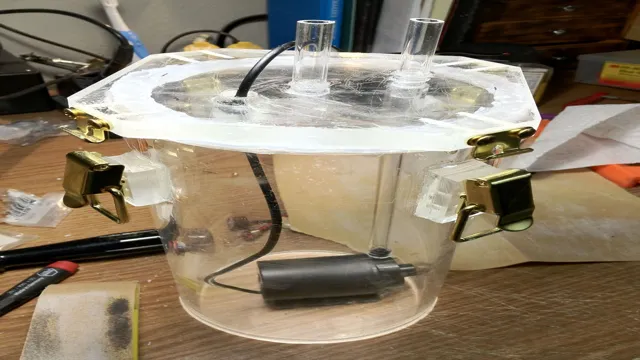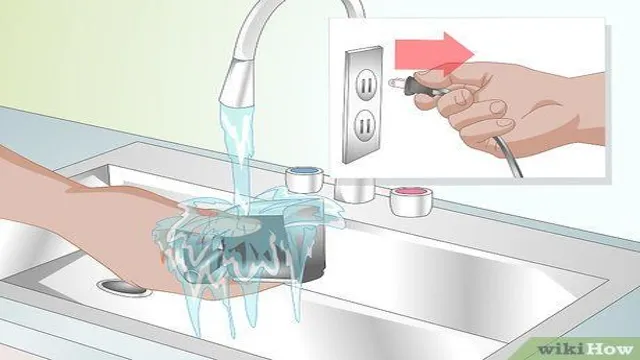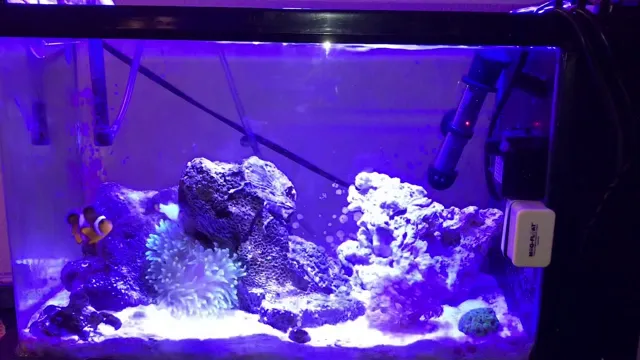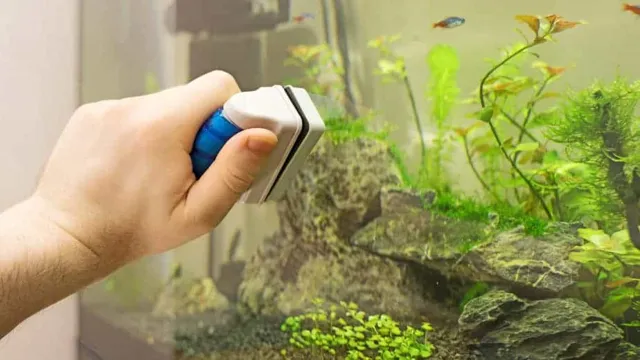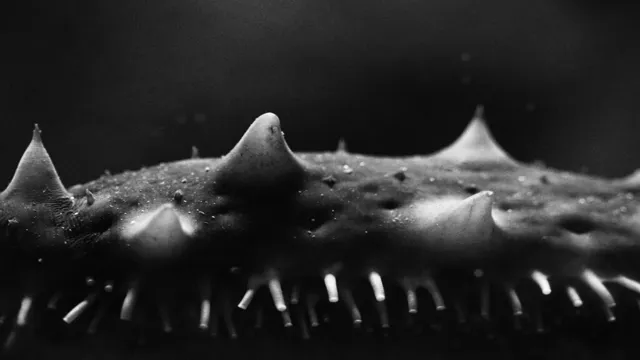As an aquarium enthusiast, you want to ensure the best environment for your fish to thrive and grow. One way to achieve this is by having a proper filtration system that can efficiently remove harmful contaminants and debris from the water. Canister filters are known to be one of the most effective filtration options for aquariums, but the cost of purchasing a high-quality one can be a bit daunting.
Fear not, because today we’ll be sharing how to make your own DIY canister filter for aquariums. With just a few affordable supplies and a bit of time, you can create a filtration system that rivals even the most expensive store-bought filters. So, let’s dive in and learn how to take your aquarium to the next level!
What is a Canister Filter?
If you’re looking for a high-quality filtration system for your aquarium, a canister filter may be just what you need. This type of filter is designed to remove debris, toxins, and other unwanted particles from the water, leaving you with a clean and healthy aquarium environment. Making a canister filter for your aquarium may sound complicated, but it’s actually quite simple.
All you need is a canister, some filter media, and a pump. Simply fill the canister with filter media, attach the pump, and let it do its job. The pump will draw water into the canister, where it will be filtered and then returned to the aquarium.
With a little bit of effort and some basic equipment, you can create an effective canister filter that will keep your aquarium clean and healthy for years to come. So why not give it a try today?
Definition and Function
A canister filter is a type of filtration system that is commonly used in aquariums to remove debris, waste, and contaminants from the water. They consist of a canister-shaped container that houses various filter media, including mechanical, chemical, and biological filters. These filters work together to trap and break down waste particles, remove toxins, and promote the growth of beneficial bacteria.
Canister filters typically have high flow rates and can be customized to suit different tank sizes and fish species. They are known for their efficiency and effectiveness in maintaining clear and healthy water in aquariums. As an aquarium owner, it is crucial to invest in a good quality canister filter for the well-being of your aquatic pets.

Advantages of a DIY Canister Filter
Building a DIY canister filter for your aquarium can have numerous benefits. One of the main advantages is that you can customize it to meet the specific needs of your fish and plants. You can choose the media that goes into the filter, such as activated carbon, ceramic rings, or bio-balls, depending on what you want to achieve.
Another significant advantage is that DIY canister filters are often much more economical than buying a pre-made version. Not only can you save money, but you can also recycle materials you already have, such as used buckets or PVC pipes. Plus, building your own canister filter can be a fun and challenging project that not only enhances your aquarium hobby but also develops your DIY skills.
With the proper know-how, tools, and materials, you can make a reliable, efficient, and robust canister filter that provides clear, healthy, and oxygen-rich water for your aquatic friends.
Cost-effective and Customizable
One of the most significant advantages of a DIY canister filter is its cost-effectiveness and customizability. With a DIY filter, you can build a unit that meets all your specific needs and preferences, which is not always possible when buying pre-built filters. Plus, you save money by not having to pay for the pre-built brand name and costly installation services. (See Also: How to Lower Freshwater Aquarium Hardness: Tips and Techniques for Optimal Water Quality)
DIY canister filters also allow you to choose your own filtration media, which can enhance the water quality of your aquarium. It’s like building your own burger at home with your preferred ingredients rather than ordering from a fast-food chain. In the end, you get a tailor-made product that meets your exact needs, and you can also take pride in the fact that you built it yourself.
So, whether you’re working with a tight budget or simply prefer a more personalized approach, a DIY canister filter is an excellent choice.
Materials Needed for DIY Canister Filter
If you’re looking for an efficient and cost-effective way to filter your aquarium water, making your own canister filter can be a great option. To start, you’ll need a few key materials. First, you’ll need a large container that can withstand water pressure, such as a plastic barrel or PVC pipe.
You’ll also need filter media, such as foam pads, ceramic rings, or filter floss. Other necessary materials include a water pump, tubing, hose clamps, and silicone sealant. Once you have all your supplies, you can start assembling your filter by drilling holes for the inlet and outlet ports, sealing them with silicone, and attaching the tubing to the pump.
Then, layer your filter media inside the container and connect the tubing to the inlet and outlet ports. With a little bit of DIY know-how, you can have a homemade canister filter up and running in no time!
Acquiring and Must-Have Components
When building your own DIY canister filter, there are several materials you will need to acquire to ensure it runs smoothly. Firstly, you will need a good-sized canister that allows for a large amount of filter media. Make sure this canister has tight seals to avoid leaks.
Next, you will need filter media, which is the material that will be put inside the canister to filter out unwanted particles. The type of media you use will depend on the type of aquarium you have and the specific needs of your fish and plants. You will also need a water pump to move the water through the filter, and piping or tubing to connect everything together.
It’s important to get the right size of piping to ensure efficient water flow. Finally, you will need some basic tools such as a drill to make holes in the canister, and silicone to seal any connections. With these materials, you can build your own effective and affordable canister filter for your aquarium.
DIY Steps for Making a Canister Filter
If you’re looking for an efficient and cost-effective way to filter your aquarium, making a canister filter is a great option. The first step is to gather the necessary materials, which include a clear plastic container, PVC pipes, a submersible water pump, and different types of filter media such as sponge, ceramic, and activated carbon. Then, drill holes in the container and attach the PVC pipes to create an inflow and outflow system.
Next, insert the filter media into the container, making sure to layer them properly starting with the coarsest material first. Afterward, connect the water pump to the inflow pipe, and the outflow pipe to a spray bar, diffuser, or hose depending on your preference. Before using the filter, make sure to prime it by filling it with water and running the pump for a few minutes.
With a little effort and creativity, you can have a functional canister filter that will keep your aquarium clean and healthy for your aquatic pets. So, why not give it a try and see the difference it can make? (See Also: How to Collect Rocks for Aquarium: A Complete Guide to Finding and Selecting the Best Rocks)
Step-by-Step Instructions with Images
Making a canister filter for your aquarium is easier than you might think. With just a few simple steps and the right materials, you can create a highly effective filter that will help keep your fish healthy and your tank clean. First, gather all the necessary parts, including a canister, a pump, filter media, tubing, and connectors.
Then, drill holes in the canister to accommodate the tubing and connectors. Next, install the pump and connect the tubing and connectors as per the manufacturer’s instructions. Finally, add the filter media to the canister and start the pump to begin filtering your aquarium water.
With a little effort, you can save money and have a custom canister filter that will give your fish the best possible environment to thrive in. So why not give it a go, and create your very own canister filter today?
Maintenance of DIY Canister Filter
Once you have learnt how to make a canister filter for an aquarium, it’s important to know how to maintain it and keep it working efficiently. Routine maintenance can prolong the life of your filters and prevent any issues that might arise. Begin by shutting off the power and disconnecting the filter from the electrical source.
Then, remove the filter media that has been used in the previous cycle and rinse it with water to remove any dirt or debris that has accumulated. Check the canister for any cracks, damage or leaks and clean it thoroughly before reassembling. It’s important to keep the rubber gaskets lubricated to prevent any leaks which could affect the filtration system.
Lastly, replace any worn out parts, such as the O-rings or hoses, to ensure the canister is working as it should. By following these regular maintenance steps, you can enjoy a healthy and thriving aquarium for many years to come.
Tips for Cleaning and Replacing Parts
Maintaining a DIY canister filter is crucial for its longevity and functionality. When cleaning, it’s essential to turn off the filter and unplug it from the power source before removing the components. Start by detaching the hoses and then carefully removing the filter media and impeller for cleaning.
A quick rinse with water can efficiently remove debris from the media, but for stubborn build-up, use a toothbrush or soft-bristled brush. It’s important to replace the filter media every six months to ensure it’s working properly. Additionally, the impeller needs replacement every 12 to 18 months.
Keeping up with these maintenance tasks will guarantee the filter works efficiently, keeping your tank clean and healthy. So, don’t forget to schedule regular maintenance for your DIY canister filter to keep your aquarium pristine.
Conclusion and Final Thoughts
If you’re tired of subpar filtration in your aquarium, a canister filter is the way to go! With just a few basic materials and some handy DIY skills, you can craft a custom filter that’s tailored to your specific tank needs. And who knows, with a little bit of tinkering, you might just create a masterpiece that’s the envy of every fish enthusiast in the neighborhood. So go ahead and give it a try – your aquatic pets will thank you for it!” (See Also: How to Jump Start a Saltwater Aquarium: A Comprehensive Guide)
FAQs
What materials do I need to make a canister filter for my aquarium?
You will need PVC pipes, a water pump, filter media, and silicone sealant.
How do I assemble a canister filter for my aquarium?
Cut PVC pipes to size and connect them with PVC connectors and silicone sealant. Install the water pump and filter media, then prime the filter by filling it with water.
How do I clean a canister filter for my aquarium?
Turn off the water pump and disconnect the inlet and outlet tubes. Remove the filter media and rinse it with clean water. Use a soft brush to scrub the inside of the canister, then reassemble the filter.
What are the benefits of using a canister filter in my aquarium?
Canister filters provide superior mechanical, biological, and chemical filtration compared to other types of filters. They also have a large filtration capacity and are suitable for larger aquariums.
How often should I replace the filter media in my canister filter?
It is recommended to replace the filter media every 6-12 months, depending on your aquarium’s bio-load and water quality.
Can I make a DIY canister filter for my saltwater aquarium?
Yes, you can make a DIY canister filter for a saltwater aquarium using the same materials and assembly process as for a freshwater aquarium.
How important is it to properly size my canister filter for my aquarium?
It is critical to choose a canister filter with the appropriate flow rate and media capacity for your aquarium size and stocking level. An undersized filter can lead to poor water quality and health problems for your aquatic pets.

